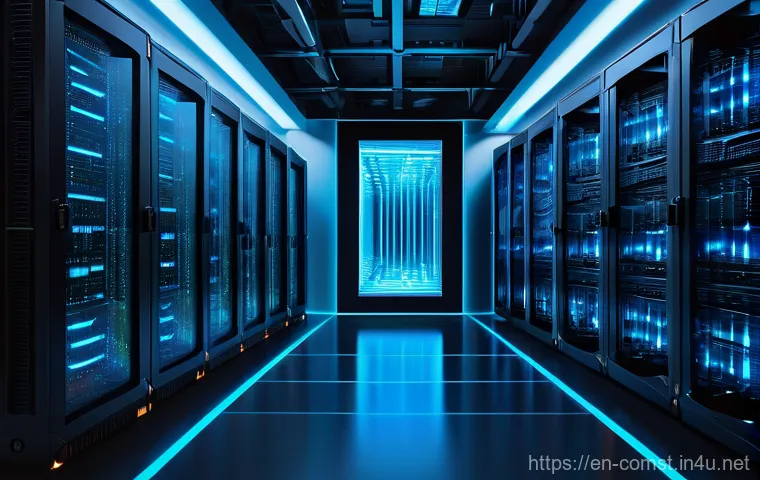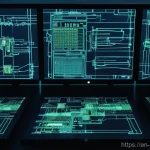Ever stopped to think about the magic happening inside your devices, from the lightning-fast phone in your hand to the powerful servers driving the latest AI chatbots?
It’s all thanks to the incredible world of computer architecture! This isn’t just about silicon and circuits; it’s the very blueprint that dictates how efficiently our tech runs, how much power it consumes, and what incredible feats it can achieve.
Having personally explored this field for years, I’ve seen firsthand how these foundational designs are constantly evolving. Right now, we’re witnessing a paradigm shift driven by AI, with specialized hardware and even self-optimizing systems becoming the norm, pushing performance and energy efficiency to unprecedented levels.
And trust me, the whispers of quantum computing and the rise of intelligent edge devices are only going to make things even more exciting, promising breakthroughs that will truly redefine what’s possible.
Understanding this fundamental layer doesn’t just satisfy curiosity; it gives you a deeper appreciation for our digital world and even opens doors in a rapidly innovating industry.
Ready to peel back the layers and discover the secrets behind the machines that shape our future? Let’s dive in and uncover exactly how it all works!
The Master Plan: Crafting the Digital Engine

Have you ever just marveled at how intricately designed our digital world is? I mean, from the smallest smart device tucked into your pocket to the massive data centers humming away, it all relies on a foundational blueprint we call computer architecture.
It’s truly the hidden artistry behind every seamless click, every lightning-fast calculation, and every mind-blowing AI response we experience daily. My own journey into this fascinating realm started years ago, and honestly, the more I learn, the more I’m convinced it’s not just about technical specs; it’s about thoughtful design choices that fundamentally shape what our technology can and cannot do.
Think of it as the grand strategy that dictates not only how fast things run but also how much energy they gulp down and even the very limits of innovation.
We’re in an exciting era where traditional designs are constantly being challenged and refined, especially with the explosion of new technologies. It’s like watching a master craftsman continually improving their tools and techniques, always pushing the boundaries of what’s possible, making every interaction we have with our devices smoother and more powerful.
Laying the Foundations: Bits, Bytes, and Beyond
At its heart, computer architecture is about how all the different pieces of a computer system work together, from the processor that does the thinking to the memory that stores information and the connections that allow them to communicate.
It’s a bit like building a house; you need a solid foundation, a clear floor plan, and efficient plumbing and electricity. In computing, this translates to instruction sets, memory hierarchies, and interconnects – the unsung heroes that ensure data flows smoothly and instructions are executed precisely.
Historically, this meant a focus on optimizing single-core performance, trying to squeeze every last drop of speed from a single processing unit. But as the demands on our machines grew, so did the complexity of these foundational designs, moving us towards more sophisticated systems that can handle multiple tasks without breaking a sweat.
It’s a continuous balancing act, always striving for that sweet spot between raw power and elegant design, trying to solve problems that were once deemed impossible.
The Evolving Blueprint: From Simple to Sophisticated
What always gets me excited is how much this field has evolved. I remember a time when getting a computer to do anything complex felt like a monumental effort.
Now, we expect instant results, and that expectation is largely met because the architectural blueprints have grown incredibly sophisticated. We’ve moved from simple, sequential processing to wildly parallel systems, capable of juggling thousands of tasks simultaneously.
This shift wasn’t accidental; it was driven by a relentless need for more power, speed, and efficiency to tackle increasingly complex problems, from intricate scientific simulations to the immersive graphics in our favorite games.
It’s a testament to human ingenuity, really, always finding new ways to optimize, to rethink the very fabric of how machines operate, constantly pushing the envelope of what’s achievable in the digital realm.
More Than Just Speed: The Relentless Pursuit of Efficiency
You know, for a long time, the name of the game in computing was raw speed – who could make the fastest chip, the quickest processing unit? And don’t get me wrong, speed is still incredibly important.
But honestly, from my vantage point, the conversation has really shifted. Now, it’s about much more than just clock cycles; it’s about *efficiency*. It’s about getting more done with less energy, generating less heat, and making our devices not only powerful but also sustainable.
This is a massive paradigm shift, driven by everything from the need for longer battery life in our smartphones to the colossal energy demands of massive data centers.
When you think about the millions of servers running 24/7, even a small increase in efficiency can translate into monumental energy savings and a reduced carbon footprint.
I’ve personally seen how engineers are obsessing over every watt, every joule, trying to design systems that are not just fast, but smart about their power usage.
It’s a truly exciting challenge, pushing the boundaries of physics and engineering to build a more responsible and high-performing digital future.
Powering Down Smartly: Energy-Efficient Architectures
The drive for energy efficiency has directly led to some incredibly clever architectural innovations. We’re seeing more heterogeneous computing, where different types of processors, like CPUs and GPUs, work together, each handling the tasks they’re best suited for.
This isn’t just about throwing more processing power at a problem; it’s about intelligently allocating workloads to optimize for both performance and energy consumption.
Think of it like a diverse team where everyone plays to their strengths. Beyond that, advances in memory technologies are also playing a huge role. Things like Non-Volatile Memory (NVM) and 3D Stacked Memory aren’t just faster; they’re designed to be more power-conscious, reducing the energy cost of moving and accessing data, which is a major bottleneck in modern systems.
It’s a complex puzzle, but every piece that focuses on efficiency makes our devices not only greener but also more reliable and ultimately, more powerful for the long haul.
The Silent Battle Against Heat: Thermal Management in Design
Anyone who’s ever had a laptop get uncomfortably warm knows that heat is the enemy of performance and longevity. Thermal management isn’t just an afterthought; it’s a core consideration in modern computer architecture.
Designing chips and systems to dissipate heat effectively, or even better, to generate less heat in the first place, is crucial. This involves everything from advanced cooling solutions to intelligent power gating techniques that shut down parts of the chip when they’re not in use.
I’ve heard countless stories from developers and gamers about how throttling due to heat can cripple performance, making it crystal clear that a powerful chip is only as good as its ability to stay cool.
It’s a constant battle, but the advancements in this area are truly impressive, allowing us to pack more power into smaller spaces without turning our devices into mini-furnaces.
From Desktops to Datacenters: How Architectures Scale Up and Down
It’s easy to think of a computer as a singular thing, right? But the truth is, the architecture inside your phone is vastly different from what’s powering a supercomputer, even though they both process information.
This scalability, the ability to tailor computer architecture to wildly different demands, is one of the most incredible aspects of the field. My experience has shown me that whether you’re designing for a tiny IoT sensor that needs to last for years on a button battery, or a sprawling data center that processes exabytes of information daily, the underlying architectural principles are adapted to meet those unique challenges.
It’s not a one-size-fits-all world; it’s a brilliant tapestry of specialized designs. This adaptability ensures that technology can permeate every aspect of our lives, from discreet wearables to the massive cloud infrastructure that supports our digital existence, all while maintaining optimal performance and resource utilization.
It’s a constant reminder that thoughtful design is everywhere, even in the systems we rarely see.
The Mighty Mini: Architectures for Edge and IoT Devices
When we talk about edge computing and the Internet of Things (IoT), we’re talking about devices that are often constrained by size, power, and cost. Here, the architectural focus shifts dramatically.
Instead of raw processing power, it’s all about extreme efficiency, low latency, and often, robust security at the device level. Imagine a smart thermostat or a fitness tracker; they don’t need the horsepower of a desktop PC, but they need to be incredibly reliable and energy-frugal.
Edge-native architectures are specifically designed for this, processing data as close to the source as possible to reduce latency and bandwidth usage.
My personal take is that this segment is going to explode even more, especially with the rise of AI at the edge, requiring even more sophisticated, yet still power-efficient, processing capabilities right where the action is happening.
The Cloud Colossus: Architectures for Hyperscale Computing
On the flip side, we have cloud computing, where the sheer scale is mind-boggling. Data centers are essentially warehouses full of interconnected servers, each running its own specialized architecture, all designed to work in concert to provide services to millions, if not billions, of users.
Here, the emphasis is on massive parallelism, high-bandwidth interconnects, and incredible fault tolerance. You can’t have a whole cloud go down because one server hiccups!
Cloud-based architectures prioritize flexibility and scalability, offering resources and services over the internet. From my perspective, the challenge here isn’t just making individual servers powerful, but making them work together seamlessly, like a massive, distributed brain, ensuring that your favorite streaming service never buffers and your online banking is always accessible.
The AI Revolution: Specialized Silicon Steps Up to the Challenge
Okay, let’s talk about the elephant in the room, or rather, the incredibly smart elephant that’s completely reshaping the landscape of computer architecture: Artificial Intelligence.
It’s not an exaggeration to say that AI has become a transformative force, literally redefining how we design computing systems. I’ve witnessed firsthand how the demands of AI workloads – think training complex neural networks or running lightning-fast inference for generative AI – have pushed us far beyond traditional CPU-centric designs.
These tasks require a level of parallel processing that CPUs simply aren’t built for. This is where specialized silicon, like GPUs, TPUs, and even neuromorphic chips, steps into the spotlight.
It’s truly fascinating to see how the software needs of AI are directly driving the hardware innovation, creating a beautiful, symbiotic relationship between algorithms and the physical machines that run them.
We’re not just making computers faster; we’re making them *smarter* in a very fundamental way, enabling feats that were pure science fiction just a few years ago.
GPUs: The Unsung Heroes of Deep Learning
If you’ve been following the AI space at all, you’ve probably heard about GPUs, or Graphics Processing Units. Originally designed to render the stunning visuals in video games, these powerhouses found a new calling in deep learning.
Why? Because their architecture, with thousands of smaller, simpler cores, is perfectly suited for the massive parallel computations that neural networks require.
My own tinkering with AI models taught me quickly that trying to train a decent model on a CPU is like trying to empty a swimming pool with a teacup – it’s just not efficient!
GPUs can process multiple data streams simultaneously, making them indispensable for tasks like video encoding, scientific simulations, and, of course, accelerating matrix multiplications in AI.
It’s a fantastic example of how a piece of hardware designed for one purpose can be repurposed to revolutionize an entirely different field, showing the true power of adaptable architectural design.
Beyond GPUs: TPUs and Neuromorphic Chips
While GPUs have been monumental, the AI revolution isn’t stopping there. We’re seeing even more specialized architectures emerge. Google’s Tensor Processing Units (TPUs), for example, are custom-designed ASICs (Application-Specific Integrated Circuits) specifically optimized for TensorFlow workloads, offering even greater efficiency for certain AI tasks.
Then there are neuromorphic chips, which are perhaps the most exciting development for me personally. These chips aim to mimic the structure and function of the human brain, with processing and memory integrated in a way that’s fundamentally different from traditional Von Neumann architectures.
This in-memory computing approach promises incredible energy efficiency and speed for AI applications, reducing the “memory wall” bottleneck. It’s a bold step towards truly brain-inspired computing, and I believe we’re only just scratching the surface of what these architectures will enable in the coming years.
Peeking Into Tomorrow: Quantum Leaps and the Intelligent Edge

Looking into the future of computer architecture honestly feels like peering into a sci-fi novel, and it’s thrilling! We’re not just talking about incremental improvements anymore; we’re talking about fundamental shifts in how computing happens, driven by concepts that were once purely theoretical.
Two areas that consistently blow my mind are quantum computing and the burgeoning intelligent edge. These aren’t just buzzwords; they represent entirely new paradigms that promise to unlock computational capabilities previously unimaginable, solving problems that are currently beyond the reach of even our most powerful supercomputers.
I’ve been following these developments closely, and the pace of innovation is staggering. It’s a future where machines aren’t just faster, but fundamentally different, thinking in ways that could redefine our understanding of what computation truly is.
This era of intelligent, adaptive, and even quantum-powered machines is no longer a distant dream, it’s becoming our imminent reality.
Quantum Computing: Unlocking Unprecedented Power
Quantum computing, with its qubits and superposition, is a concept that still feels like magic to me, even after years of reading about it. Unlike classical computers that rely on bits (0s and 1s), quantum computers use qubits, which can represent 0, 1, or both simultaneously.
This fundamental difference allows quantum computers to perform complex calculations at speeds that would take classical supercomputers years to complete.
Imagine tackling problems in cryptography, drug discovery, or materials science that are currently impossible to solve. AI algorithms are actually playing a critical role in the development of quantum computers themselves, assisting with error correction and optimizing quantum circuit configurations, leading to hybrid architectures.
While still in its early stages, the potential of quantum-ready architectures to revolutionize industries like pharmaceuticals and logistics is immense, and it’s a space I’m watching with bated breath.
The Intelligent Edge: Bridging Cloud and Local Processing
Then there’s the intelligent edge, which is essentially bringing advanced processing power and AI capabilities closer to where data is generated – right to the edge of the network.
This isn’t just about small, energy-efficient devices; it’s about making those devices smart and capable of real-time decision-making without constantly needing to communicate with a distant cloud server.
Think autonomous vehicles making split-second decisions or smart cities managing traffic flows in real-time. My experience tells me that this convergence of AI, 5G, and edge computing is going to create a new wave of autonomous systems, leading to seamless digital experiences that respond instantaneously to our needs.
It’s about combining low latency with high availability, ensuring critical applications function flawlessly even without constant connectivity, which is a massive win for reliability and speed.
Decoding the Core Components: What Really Makes Our Tech Tick?
Okay, so we’ve talked about the big picture, the grand strategies in computer architecture. But let’s get down to the nitty-gritty: the actual components that make all this magic happen.
Understanding these core pieces isn’t just for engineers; it gives you a deeper appreciation for why your gadgets behave the way they do and why some tasks feel snappier than others.
From my perspective, these components are like the specialized organs of a living system, each with a crucial role to play, and their interaction defines the overall health and performance of the entire machine.
It’s a symphony of silicon, wires, and clever design, all working in perfect harmony (most of the time, anyway!). Peeling back these layers reveals the intricate dance of data and instructions that underpins our entire digital world, and honestly, it’s just plain cool to see how it all comes together.
The Dynamic Duo: CPUs and GPUs
When we talk about processing, the CPU (Central Processing Unit) and GPU (Graphics Processing Unit) are the undisputed stars. The CPU is often called the “brain” of the computer, and for good reason.
It’s a master of sequential processing, handling complex, single-threaded tasks with precision and reliability, like running your operating system or crunching numbers for a database.
I often think of a CPU as a brilliant professor, tackling one incredibly tough problem at a time. The GPU, on the other hand, is like a massive team of diligent students.
It has thousands of smaller cores designed for massive parallelism, meaning it can perform the same operation on many different pieces of data simultaneously.
This makes it ideal for tasks like graphics rendering and, as we discussed, AI and deep learning. It’s not about which one is “better”; it’s about understanding their strengths and making them work together for optimal performance.
| Feature | CPU (Central Processing Unit) | GPU (Graphics Processing Unit) |
|---|---|---|
| Primary Role | General-purpose computation, sequential tasks, operating system management | Specialized computation for graphics, parallel tasks (e.g., AI, deep learning) |
| Core Count | Fewer, powerful cores (e.g., 4-64 in modern servers) | Thousands of simpler, specialized cores |
| Clock Speed | Higher (typically 3-5 GHz) | Lower (typically 1-2 GHz) |
| Memory Type | System RAM (DDR) with large caches | Dedicated high-bandwidth memory (VRAM like GDDR6 or HBM) |
| Optimization For | Low-latency, complex logic, branch-heavy computations | High-throughput, parallel execution, matrix multiplications |
| Energy Efficiency | More energy-efficient for general tasks | Consumes more power due to parallel processing needs |
Memory and Storage: The Data Highway
Beyond the processors, memory and storage are absolutely critical. RAM (Random Access Memory) is your computer’s short-term memory, super fast but volatile, used for actively running programs and data.
Then there’s persistent storage, like SSDs (Solid State Drives) or HDDs (Hard Disk Drives), which keeps your files safe even when the power is off. But it’s not just about capacity; it’s about how quickly these components can feed data to the hungry processors.
Advanced memory technologies like Non-Volatile Memory (NVM) and 3D Stacked Memory are continuously pushing the boundaries, addressing major issues like power consumption, performance, and scalability.
From my daily use, I can tell you that a slow hard drive or insufficient RAM can be a bigger bottleneck than a slightly older processor, highlighting just how interconnected these components truly are.
Why Your Everyday Gadgets Feel So Snappy: The Magic of Optimization
Have you ever stopped to think about why your smartphone feels so incredibly responsive, or why that new app just flies? It’s not just powerful hardware – although that certainly helps!
It’s the culmination of intricate architectural optimizations designed to make your everyday digital life feel effortless. My journey through this field has constantly reinforced one thing: the real magic happens when hardware and software are designed in perfect harmony, almost like a finely tuned orchestra.
This isn’t just about raw processing power; it’s about smart allocation of resources, intelligent power management, and a deep understanding of how users interact with their devices.
It’s what transforms a collection of circuits into a seamless, intuitive, and genuinely enjoyable experience, constantly optimizing for that “snappy” feeling we all crave.
Tailoring Tech: Architecture for Mobile Devices
Consider your phone. It’s a tiny supercomputer in your pocket, and its architecture is a masterclass in compromise and optimization. Mobile processors, like those based on ARM architecture, are designed with extreme power efficiency in mind, prioritizing battery life without sacrificing performance for common tasks.
This means clever designs for integrated components, sophisticated power management units, and often, specialized accelerators for things like image processing or AI inference directly on the chip.
My personal take is that the innovations in mobile architecture are often more challenging than for desktop PCs, simply because the constraints are so much tighter.
It’s about doing more with less, which is a testament to the ingenious minds behind these designs.
Seamless Interactions: The Role of Optimized Software Stacks
Beyond the hardware itself, the software stack plays an enormous role in how “snappy” your gadgets feel. Modern operating systems and applications are designed to take full advantage of the underlying hardware architecture, using techniques like parallel processing, efficient memory management, and intelligent task scheduling.
This synergy is crucial. Even the most powerful chip won’t feel fast if the software isn’t optimized to run on it. I’ve always found it fascinating how developers and architects work hand-in-hand, constantly refining their approaches to squeeze every last drop of performance out of the system.
This collaborative effort ensures that when you swipe, tap, or speak to your device, it responds almost instantaneously, creating that fluid, intuitive experience we’ve all come to expect and depend on.
글을 마치며
Whew! What a journey we’ve been on, diving deep into the fascinating world of computer architecture. It’s truly incredible to peel back the layers and see how every decision, from the smallest transistor placement to the grandest system design, plays a crucial role in shaping our digital experiences. For me, it’s not just about silicon and circuits; it’s about the relentless pursuit of innovation, the brilliant minds constantly pushing boundaries, and the sheer artistry that goes into making our tech work seamlessly. I hope this exploration has given you a fresh perspective on the marvels humming away inside your devices and ignited a spark of curiosity about the hidden engines of our modern world.
알아두면 쓸모 있는 정보
1. Don’t just chase raw clock speed. Modern performance is a complex interplay of CPU, GPU, memory, and storage. A balanced system, where components work in harmony, often delivers a far better user experience than one with just a single overpowered part. Think about your actual usage – are you gaming, video editing, or just browsing? Tailor your expectations and upgrades to that reality.
2. Keep an eye on energy efficiency. Devices designed with power consumption in mind not only save you money on your electricity bill but also run cooler and often last longer. This is especially true for laptops and mobile devices where battery life is paramount. When choosing new tech, look for features like intelligent power management or specialized low-power cores.
3. Your software stack matters just as much as your hardware. Even the most cutting-edge processor won’t feel fast if your operating system is bogged down with bloatware or your applications aren’t optimized. Regularly update your software, clear out unnecessary programs, and ensure your drivers are current to get the most out of your architectural investments.
4. The AI revolution isn’t just for tech giants. Understanding how specialized hardware like GPUs and TPUs accelerate AI tasks can help you make smarter choices when it comes to systems for creative work, data analysis, or even just picking the right gaming rig. These aren’t just for data scientists anymore; they’re increasingly integral to everyday applications.
5. Consider the future. Concepts like quantum computing and the intelligent edge might seem futuristic, but they’re already influencing research and development. Staying informed about these trends can give you insights into where technology is headed and help you appreciate the foundational shifts that will eventually impact how all of us interact with computing, from smart homes to advanced medical devices.
중요 사항 정리
At its heart, computer architecture is the foundational blueprint governing how our digital world functions, directly influencing everything from the speed of your smartphone to the capabilities of advanced AI. We’ve seen how this field has continuously evolved, shifting from an initial focus on raw speed to a sophisticated pursuit of efficiency, scalability, and specialized processing for diverse applications. The rise of AI, in particular, has driven unprecedented innovation in hardware design, necessitating custom silicon like GPUs and TPUs to handle its unique computational demands. Looking forward, emerging paradigms like quantum computing and the intelligent edge promise to fundamentally reshape our understanding of what’s possible, pushing the boundaries of computation beyond current limitations. Ultimately, it’s a dynamic and exciting realm where human ingenuity constantly optimizes the intricate dance between hardware and software, creating the seamless, powerful, and increasingly intelligent digital experiences we rely on daily.
Frequently Asked Questions (FAQ) 📖
Q: What exactly is computer architecture, and why should I, a regular tech user, even bother understanding it?
A: Honestly, when I first heard ‘computer architecture,’ I pictured dusty textbooks and complicated diagrams, and my eyes would glaze over! But it’s so much more vibrant and foundational than that.
Think of it like the master blueprint for a skyscraper or the intricate recipe for your favorite dish – it’s the fundamental design that dictates how all the parts of a computer system, from the tiny chip in your smartwatch to the massive servers powering cloud services, work together.
It’s not just about silicon and wires; it’s about the logical structure, the instruction sets, the memory organization – basically, the whole strategy for efficient computation.
Now, why should you care? Well, having personally delved into this, I’ve realized it’s the secret sauce behind everything we love about modern tech. Ever wonder why your new phone feels so much snappier than your old one, or why AI can now generate such incredibly realistic images?
It’s often due to architectural innovations! Understanding this gives you a ‘behind-the-scenes’ appreciation for the devices you use every single day.
It helps you grasp why certain devices perform better, consume less power, or are capable of certain amazing feats. Plus, if you’re ever thinking about a career in tech, even on the software side, having this foundational knowledge is a massive leg up – trust me, employers really value that depth!
Q: I keep hearing about
A: I transforming everything. How is Artificial Intelligence specifically impacting and reshaping computer architecture right now? A2: Oh, AI!
It’s not just a buzzword anymore, is it? It’s fundamentally shaking up computer architecture in ways I honestly didn’t fully anticipate even five years ago.
It’s like watching a new chapter unfold right before our eyes. The traditional ‘one-size-fits-all’ CPU (Central Processing Unit) that dominated for decades simply isn’t efficient enough for the massive, parallel computations AI workloads demand.
What we’re seeing now is a huge shift towards specialized hardware. Graphics Processing Units (GPUs) are the most famous example; they were initially for gaming but turned out to be absolute powerhouses for AI due to their parallel processing capabilities.
Beyond GPUs, we’re seeing the rise of custom AI accelerators, like Google’s TPUs (Tensor Processing Units) and various neural processing units (NPUs) integrated directly into your phone.
These are designed from the ground up to handle AI tasks with incredible speed and energy efficiency. And it goes even further! We’re moving towards architectures that are almost ‘self-optimizing,’ where AI itself helps design and fine-tune future chips, making them smarter and more adaptive.
From my perspective, working with these systems, it feels like we’re building brains for our machines, and the underlying architecture has to evolve dramatically to support that intelligence.
It’s truly a thrilling time to be observing this!
Q: Looking ahead, what’s next for computer architecture? What kind of exciting breakthroughs or shifts should we be anticipating in the coming years?
A: Oh, this is where it gets really exciting for me! The future of computer architecture is absolutely brimming with potential, almost like science fiction becoming reality.
One of the biggest whispers – and it’s getting louder – is about quantum computing. We’re talking about a completely different way of processing information, not with bits (0s and 1s) but with ‘qubits’ that can be 0, 1, or both simultaneously.
While still in its early stages, quantum architecture promises to tackle problems that even our most powerful supercomputers can’t handle today, like discovering new medicines or breaking incredibly complex encryption.
It’s a whole new ballgame! Then there’s the continued rise of intelligent edge devices. Instead of sending all data to the cloud for processing, more and more computation will happen right where the data is collected – think smart sensors, autonomous cars, and IoT devices.
This requires super-efficient, low-power architectures designed for specific tasks, often incorporating AI directly into the chip. I’m also personally fascinated by developments in neuromorphic computing, which aims to mimic the structure and function of the human brain.
Imagine computers that learn and adapt in ways that are truly organic! The constant drive for greater energy efficiency and sustainability will also push architects to innovate with new materials and designs.
Honestly, the breakthroughs coming our way will redefine what’s possible, and I can hardly wait to see how these incredible technologies integrate into our daily lives and revolutionize industries.






